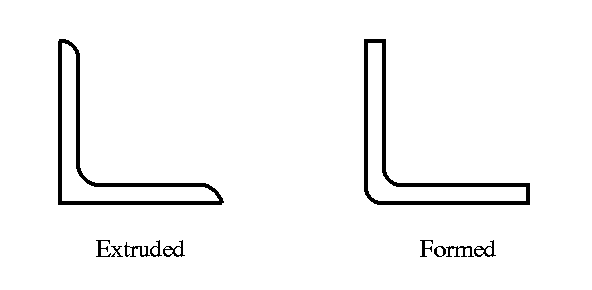
In the extrusion process the formable material is forced through a die with a shape matching the geometry of the desired cross-section. As the material comes out of the die it is immediately cooled (in the case of metals and thermoplastic composites) or cured (in the case of thermoset composites). The extrusion and pultrusion processes are based on the same principle with the difference being that in the former the material is pushed through a die where as in the latter the material is pulled through a die - typical of fibrous composite materials.
Formed sections are pressed, bent, or rolled into the final cross-sectional shape. Forming process can be used to make shapes that can be formed from a continuous sheet (e.g., L, C, U, hat shapes). Other shapes such as 'T' and 'H' sections cannot be formed because of branching at the joints, and must be extruded.
A way to recognize extruded sections is by looking at the corner locations. The outside corners are sharp while the inside corners are rounded with a desired fillet radius. In a formed section, the inside and outside corners are rounded, and typically concentric.
